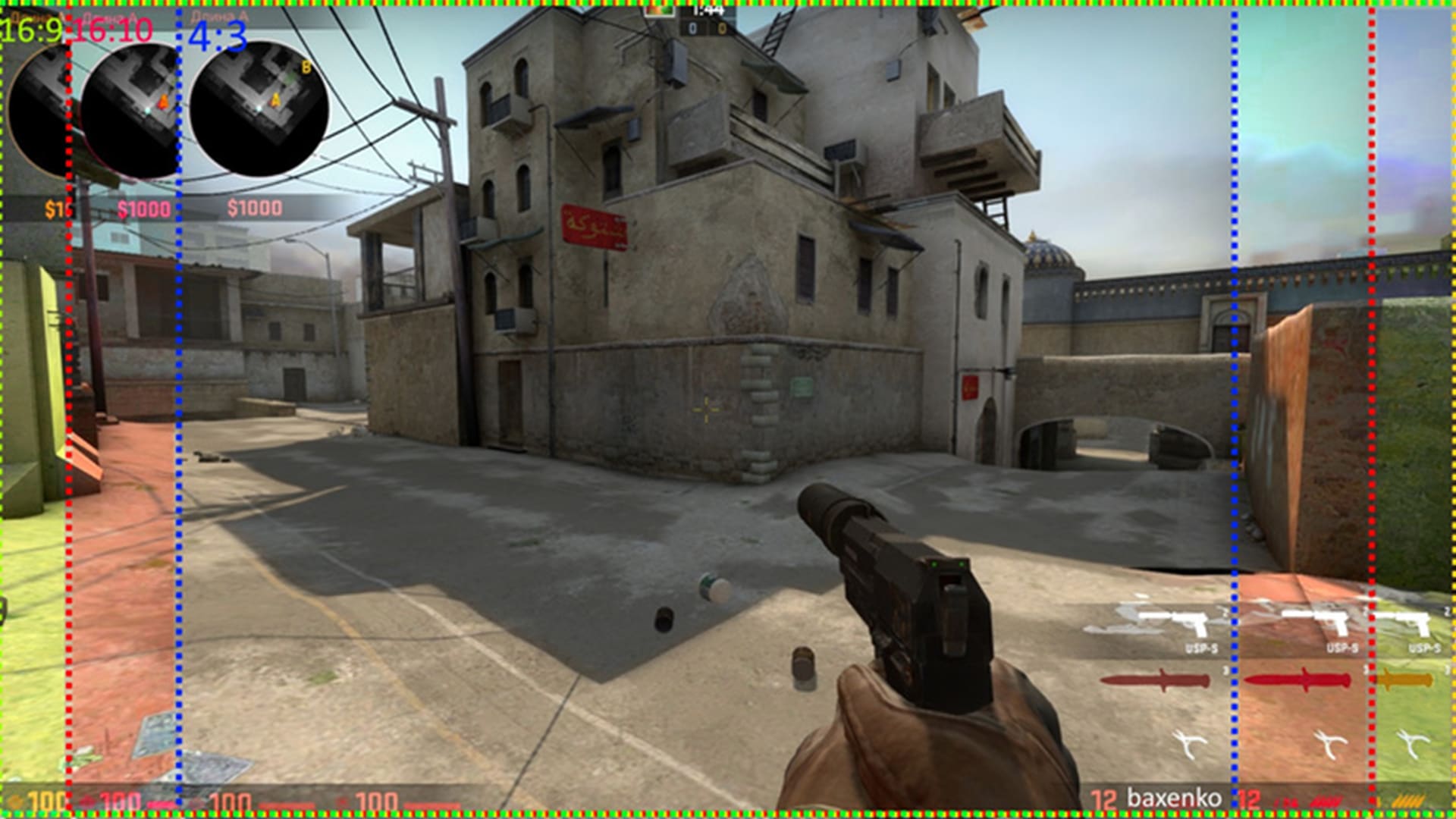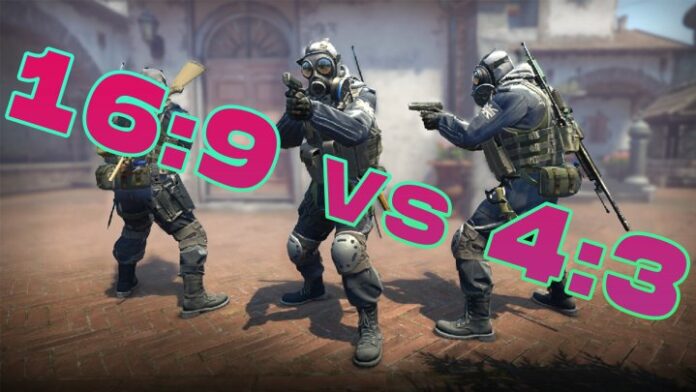Do you also have that one friend who plays 4:3 and you still don’t understand what the deeper meaning behind it is? Then we’ve got all the answers for you!
Particularly in competitive shooters like Counter-Strike, Valorant or Rainbow Six Siege, players have been fiddling with different settings back and forth since the beginning of time. Whether it’s crosshair colour, shape or size, the right mouse sensitivity or adapted graphics, there are many factors that seem rather inconspicuous at first glance, but can make a big difference when optimised correctly.
In online forums such as Reddit or HLTV, a wide variety of opinions circulate. Even in the professional Counter-Strike scene, there is a development in an interesting direction.
The Basics
Almost every computer or video game these days is designed for a standard resolution of 1920×1080 (high-definition). This is a width-to-height ratio, the so-called aspect ratio, of 16:9. Some monitors nowadays even allow much higher resolutions. Here we are talking about 4K UHD or 8K UHD.
The majority of games are played using these 16:9 resolutions. In shooters, on the other hand, the focus is usually not on the beautiful graphics, but primarily on the optimal benefit for the player. For this reason, there is a very frequent switch to other screen formats here.
Besides 16:9, the best-known representatives are 4:3, 16:10 and 5:4. All these formats have a different structure compared to 16:9, because the width and height values here have a different relationship to each other. The closer the format is to a 1:1 ratio, the squarer it becomes.

As the image continues to contract when using these resolutions, black bars appear at the edges. Many players get around this problem by stretching the image to the full width. This is called a “stretched” resolution.
Playing with stretched resolutions became known at the beginning of Counter-Strike: Global Offensive through ninjas-in-pyjamas legend GeT_RiGhT. He won a lot of tournaments in the early years, using funny-looking graphics, and drew attention to it.
In Counter-Strike, all these settings cannot be configured via the game. Rather, the monitors plugged in have to be set via access to the graphics card’s control panel. For NVIDIA graphics cards, all that is required is a right-click on the desktop.
Field of View and Graphics
Now we need to clarify whether it is worth changing to a different resolution or whether it is better to stay with the standard. For this we will look at the two most frequently used formats, 16:9 and 4:3.
The 16:9 picture format has a significant advantage over the more compressed formats. This is the wider field of vision of the player. This means that you have a better chance of seeing passing opponents at the edge of the screen, whereas 4:3 users would not be able to. In the past, there have already been a few funny fails in the pro scene because of this problem.
Naturally, the image format with the larger pixel count also has a prettier look. However, this is not quite as important in very fast shooters and many players accept poorer graphics. In addition, higher graphics also mean losses in terms of frames and can lead to poorer performance. If the resolution is too low, however, the image becomes very pixelated. You should also be careful here.
Since the 4:3 resolution shows a smaller section of the picture, this allows a stronger focus on an exact position. In a kind of tunnel vision, you can concentrate more easily on important spots in the game. Professionals see an advantage here over the wider 16:9.
Player Models and Movement
Probably the biggest difference, and the reason why many prefer the 4:3 format, is the change in player models. Due to the distortion of the image, the model of the terrorists and anti-terrorists is enlarged by almost 50% in addition to the surroundings. This makes it seem as if the opponents are easier to hit than usual because of their size.

Percentage-wise to the game world, however, the models are the same size. However, since we focus so much on the models when playing and almost completely block out the surroundings around them, it can be an advantage after all.
Because the game elements are spread out, movements in 4:3 format are also much faster and smoother. This is especially noticeable when jumping or bunny-hopping and makes for a much more dynamic gameplay. The spray of the weapons is also easier to control.
What the pros say
Actually, settings have always been personal preference and did not ensure that players could gain any particular advantage in the game. However, due to the shift of many CS:GO pros away from 16:9, one can’t help but feel that it might do some good after all.
Nothing has been proven to date, however, and some players have even remained faithful to their 16:9 resolution. Others have discovered some completely new formats for themselves with 16:10 or 5:4. On the Prosettings website you will find an overview of all known professional players.
Be aware, however, that simply changing the settings will not make you the next s1mple. Sometimes it can help to just try it out for yourself and develop your own personal customised playing experience.


